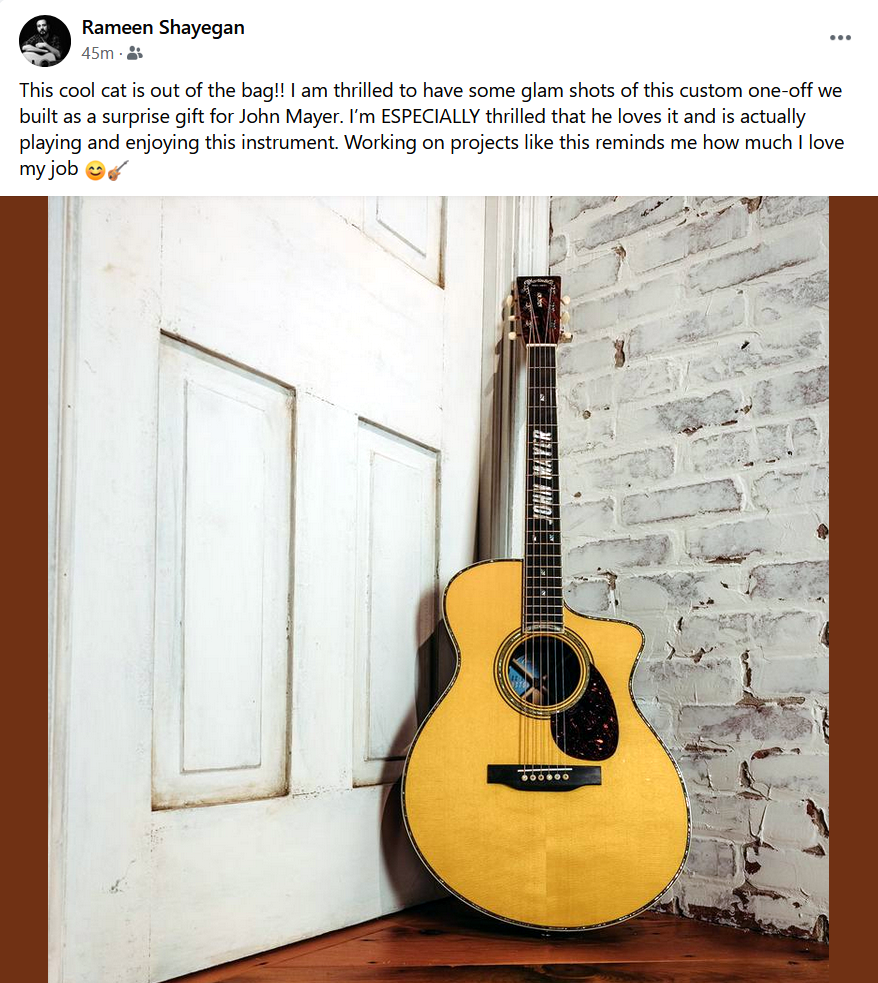Frank Krupit, Guitarist’s Guitarist 1951 – 2024
A man of many talents, Frank Krupit has left this mortal coil
“We bonded over post-rehearsal Guinness and cheeseburgers at Woodrow’s in lower Manhattan, where I’d hear tales of Frank’s years as the captain of a fishing vessel, and the tours of Ireland backing up the Anglo-Irish band Celtic Spirit.”
Frank Krupit was a guitarist of joyful skill and dedication and one of the finest men I have ever been privileged to know. He was much more than a guitarist, of course, but I met him through the many Martinfest gatherings, where he featured his chops in countless jam session and we became brothers-in-music over the years. Frank’s passing today after a long illness was not a surprise so much as deeply regrettable expectation that would have come too soon in any case.
In 2013, I was honored to be asked by retired Broadway actor Paul Ukena Jr. to join him in a guitar trio, featuring early and mid-century swing, jazz, and show tunes, with Paul’s clear baritone voice at the microphone and “Left Frank Krupit” and I on guitar accompaniment, taking turns playing time or lead, melody or harmony, and weaving three-guitar tapestries, greatly informed by Frank’s decades of playing Jazz, Rock, and Pop music. Here are excerpts from the Paul Ukena Trio’s very first “real gig.”
Frank earned his degree in music and played in various groups early on. After raising a family and enjoying years as an amateur hockey player, he returned to renewed interest in playing music on his left-handed guitars, which had led to his early nickname of “Lefty” and the later “Left Frank.”
Collaborator with so many during so many lovely, musical hours, on acoustic guitars at Martinfest, but also cranking it up on electric guitars when playing with full bands, like D.O.R.K.F (the initials of the band members.) Frank reveled in learning the note for note solos of classics like Sultans of Swing and Honky Tonk Woman.
D.O.R.K.Fest was a very special night indeed. The band members would practice for a year at home on their own, then gather for one lone rehearsal the night before they played four or five hours of classic rock in a hotel bar for their many friends, and the delighted hotel guests lucky enough to be there. Frank and Maury Rutch sharing in lead guitar duties and garnering standing ovations on duets like Reelin’ in the Years and Hotel California. But here Maury is covering the bass duties while I make a rare guest appearance on electric guitar and the late (great) Greg Kendig joins as guest vocalist. (I only discovered this video a few minutes ago!)
Frank could play in many styles, from Fats Waller and Duke Ellington to Dire Straits and of course the Beatles. Some of my favorite memories include Frank co-hosting a Beatles sing-a-long with Mike Bono on the last night of Martinfest. For years they would sit down and play every Beatles song they could think of, taking requests, but they would only play a song once during the evening, and still manage to play Beatles songs non-stop from the hours of the packed hotel lounge to the wee hours near dawn for the lingering diehards who just didn’t want Martinfest to end. Frank knew all the lead guitar parts, all the solos, even the keyboard solos that he would play with his left-handed Martin OM-28V. I must assume his seeing the Fab Four at Shea Stadium in 1965 had a lasting impression the young lad he was back then. (Video cued up to 8:27)
In later years, Frank played a Custom Shop OM with a cutaway, Carpathian spruce top, and Madagascar rosewood back and sides, which he adored like an adopted child. Here heard on Fats Waller’s Bran’ New Suit.
And Chuck Berry’s C’est La Vie.
Frank and I bonded over Guinness and cheeseburgers at Woodrow’s in lower Manhattan, after Wednesday morning rehearsals at BMI’s 7 World Trade Center offices, where the president gave the trio a conference room because he and Frank came up together in the 38 years Frank worked there before he retired. I’d hear lunchtime tales of Frank’s years as the captain of a fishing vessel, as well as his photographic memory of the NY Rangers ups and downs, and his tours of Ireland backing up the Anglo-Irish band Celtic Spirit.
He was a connoisseur of a fine, rich stout, and a fine, rich family life. Frank and his adorable wife Maria raised to two fine sons together, and spent many endriched and wonderful years going to see their favorite indie artists and major touring acts in concert.
Frank Krupit earned and enjoyed a life well-lived. His solos from the years we spent as sidemen for Paul Ukena have been popping in my head all week, perhaps through some cosmic connection. If anyone deserves to be issued a celestial harp, it is Frank Krupit, the left-handed model, of course.
Frankie Baby, who loves ya’? We ALL do.
And that is one man’s word on my brother-in-music Frank Krupit.
Here’s of Frank’s musical gift he dolled out over the years. I will miss that chemistry and collaboration forever. And never can I lift a Guinness without thinking of my brother-in-music. Sláinte!
Lady Be Good by Irving George and Ira Gershwin
Cheek to Cheek by Irving Berlin
Y Tu, Que Has Hecho from Buena Vista Social Club
Long May You Run by Neil Young. Long may Frank’s music run on Youtube!








